THE STORIES WITHIN OUR TEARS
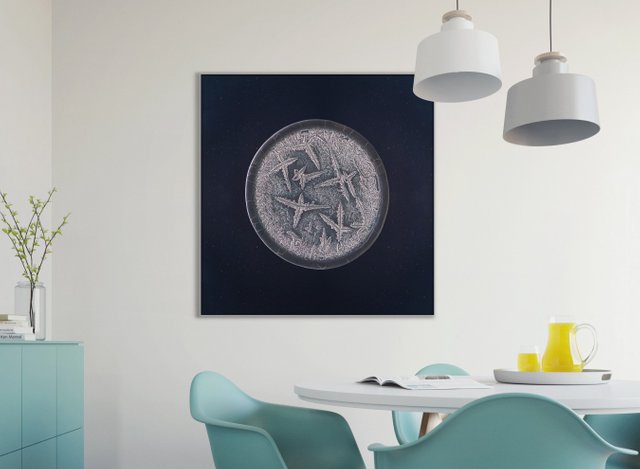
Every tear has a hidden story. They are small droplets of fluid, but at the same time complex vials of human emotion produced by one of the most basic and primal expressions of our feelings and thoughts: crying. In 2015, Maurice Mikkers started on a quest to turn tears into works of art, which resulted in the ‘Imaginarium of Tears’.
Imaginarium of Tears is an ongoing photography project. Mikkers captures the beauty of tears by crystalizing and subsequently photographing them underneath a microscope. The results are stunning works of art that have been featured by Wired.com, Business Insider, National Geographic, Gizmodo, Al Jazeera and many more.
These micrographs of crystallized tears function as story starters. Mikkers: “Since every tear has a hidden story, the ultimate goal is to create more awareness around the stories and challenges faced in life that caused these tears, therefore hopefully bringing people closer together.” Mikkers believes we should embrace our tears. “They are one of the true expressions of yourself and your connection to the world.”
Leader, of Imaginarium of tears showing the beautiful crystallization proces
Mikkers was a lab tech before becoming a professional photographer. While working at a lab, he spent a lot of time looking through a microscope. He found this visual experience the most mesmerizing part of his job. Aspects of his work that were commonly seen as routine, science and diagnostics, had an extra dimension for him. He saw art.
Since taking pictures or being creative was not part of his job description, he exchanged his lab coat for a laptop and a camera, and a few years later he graduated in Interactive / Media / Design at The Royal Academy of Art in The Hague. He developed a strong passion for photography and in his work he combined his passion for the different disciplines of science, art and technology
Years later, this resulted in Micrograph Stories. For this project, Mikkers used his microscope to visualize the everyday things we encounter and consume in our daily life. He focused on food additives, medicine and drugs, creating unique stories that facilitated awareness around these subjects. His work was quickly picked up by the media and the scientific community, resulting in unique opportunities and collaborations worldwide.
One day, while working on newly arrived samples for Micrograph Stories, one of Mikkers’ toes (un)fortunately hit his table with considerable force, resulting in a few tears of pain. In a moment of clarity, he captured a tear rolling down his cheek with a micropipette. He dispensed the small drop onto a microscope slide and got to work.
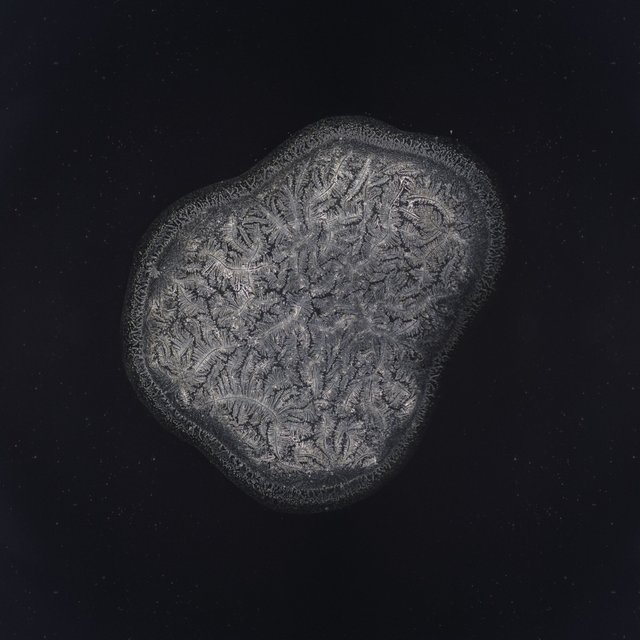
The first tear of Imaginarium of Tears — how it all started”
Mikkers: “Like most other experiments, we don’t exactly know at the time what to do, what process to follow or even what to expect from it. So after the sample crystalized in ambient temperature, the next step was to figure out what light technique to use under the microscope, in order to make it visible. After trying several light techniques, I struck gold. The result of a dark field illumination technique stunned me. I saw a nearly perfectly round crystalized tear against a dark background, showing clear, bright, beautiful patterns and shapes. Like looking at a little planet with a unique landscape.” This was so mesmerizing that Mikkers decided from that moment on to explore more tears, which resulted in researching various ways of capturing and visualizing tears. Thus the Imaginarium of Tears project was born.
The first experiment yielded many new questions for Mikkers, such as whether it is possible to optically differentiate between the different types of tears. Mikkers: “Scientifically, tears can be divided into three different types. Basal, reflex, and the most well-known type of tear: the emotional tear, a response to an emotional state such as, pain, anger, sadness or pleasure. Basal tears act as a constant shield between the eye and the rest of the world, keeping dirt and debris away. Reflex tears are formed when your eyes need to wash away harmful irritants, such as smoke, foreign bodies or onion fumes.”
Capturing emotional tears was not always easy, because most people are not able to cry on demand, plus tears need to be properly preserved if you do not process them straightaway. The project turned out to involve a lot of waiting. Mikkers tried many techniques in order to learn how to properly preserve tears once he captured them. “In many sessions we also caught basal or reflex tears and visualized these instead. These visuals had less of a story behind them, but would later go on to have a scientific value for the project.”
Over the years however, Mikkers was able to capture quite a few genuine tears, by being patient and persistent. “The stories behind those sessions were varied and often intense. Such as a good friend who donated a tear of sadness, because her dad was very sick and there was nothing she could do about it. Or the tears of complete frustration from my sister because her boss would not allow her to reach her full potential at work. And tears of goodbye from a friend who moved back to his home country. But also tears of laughter, after someone cracked a hilarious joke.”
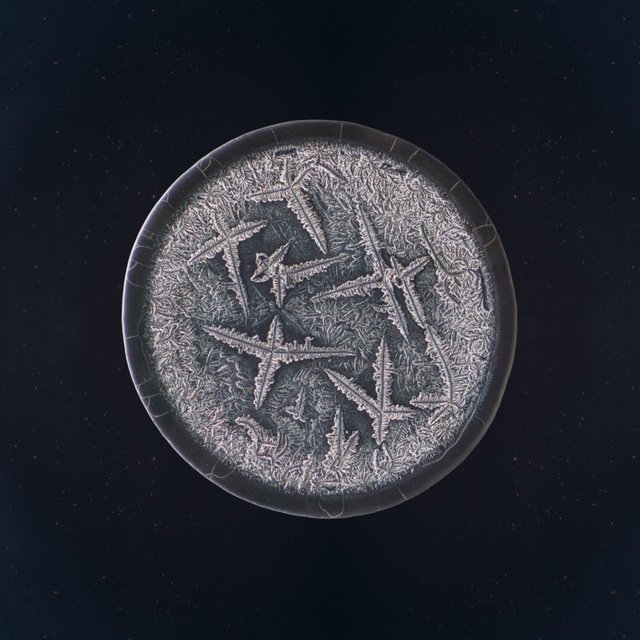
The tear of sadness.
Mikkers dove deep into the scientific, psychological explanations for what makes us cry. As it turns out, the crystallized tears all have unique features. This was one of the aspects that Mikkers decided warranted further research, because he was interested to know whether we can indeed differentiate between the different types of tears or even emotions based on a picture of a crystallized tear.
Mikkers: “There is currently no scientific proof that emotions directly influence the composition of a tear, but not a lot of research has been done on that specific question. Tear fluid contains a cocktail of oils, proteins, enzymes and a large quantity of electrolytes suspended in water. The precise contents of this cocktail are unique to your own physiology and type of tear that is produced. Together with different variables such as the temperature and humidity, this will influence the tear evaporation and crystallization process. This results in different and unique crystalline structures when viewed through a microscope.”
As the project evolved, Mikkers continued to improve the whole process. “In recent years, we have done a lot of research to find a method by which people can capture and store their tears at home or in any other comfortable situation, as these are the places where emotional tears genuinely occur.” This resulted in the creation of the Tear Collection Kit, which provides a convenient, easy way to capture and store tears and send them to Mikkers by mail.
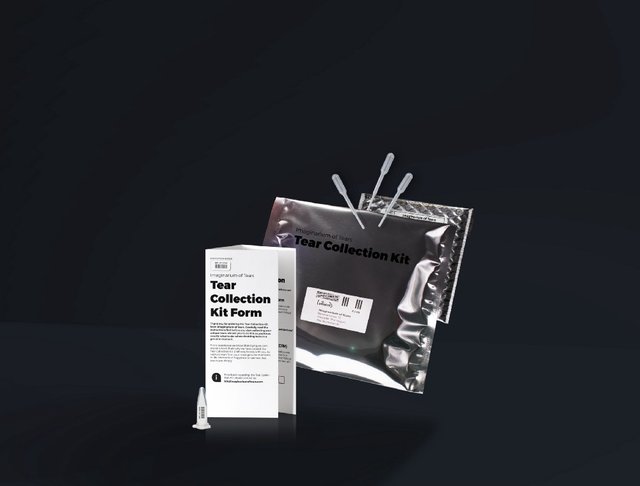
The Imaginarium of Tears — Tear Collection Kit. More information || Buy
Images taken under a microscope, also known as micrographs, are all about the details. Mikkers: “It is a time consuming and precise task, so we built our own scanning stage and software to control it. This helps us to accurately and “automatically” create ultra-detailed high resolution images of your tears by taking, on average, 500 pictures in a comprehensive grid pattern. This enables us to capture the complete tear in its full glory.” The process of photographing and processing the data takes around 90 minutes, including the rendering of the photographs into one giant picture. The entire process takes around three hours. Mikkers: “This ultimately yields one ultra-detailed image showing your unique tear as a work of art. The process allows us to use a crystalized teardrop of 1 millimeter and easily print it with a 1 meter diameter, making the total enlargement 1.000x. Currently we have different standard packages available online. What we like most is to create unique works of art, and therefore we are always open for our clients to discuss different sizes and media.”
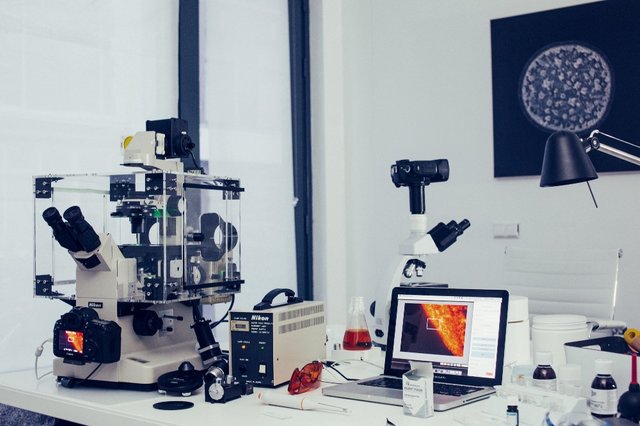
Microscope setup — for more detailed info about the comprehensive grid pattern please watch 1 and or 2
When discussing future plans for the project, Mikkers explains that he is working on a whole range of ideas. But what he is most proud of is the various collaborations with universities and their various departments, such as psychology, sociology, physics and biotechnology. Mikkers: “Through these collaborations, art and science come together to communicate the challenges in the field. To me, that is a beautiful symbiotic relationship.” He is also a frequent speaker at events, such as at TEDxAmsterdam, where he explained his whole process and shared the stories behind his tears. Mikkers tagline for that event was: “Just like TED’s slogan ‘Ideas worth Spreading’, I believe in ‘Tears worth Shedding’.”
TEDxAmsterdam 2015 — “Just like TED’s slogan ‘Ideas worth Spreading’, I believe in ‘Tears worth Shedding’.”
In addition to collaborating with academia, Mikkers also spends a lot of time on artist collaborations. “We are always researching the use of different types of materials and media. We are working on turning tears into unique sculptures, but also on turning them into jewelry designs using 3D printing. We are also exploring VR experiences, where you can walk through your own tear or tears of others. We also hope to someday gather a selection of these unique tears and stories and turn it into a book. There are many project and ideas on the horizon and we would like to invite you to follow us on micrographstories.com and imaginariumoftears.com , where you can read all about the project, its current status and any future ideas.”

VR Experience “Museum of tears” — “Temple of tears”
At the heart of Mikkers’ project is the spirit of collaboration and sharing. “For us, the most important thing is to create a safe environment in which it is possible to interact and share our tears and emotions, while turning them into art. Perhaps, who knows, it might even be possible one day to differentiate between different types of emotions. To me however, capturing the tear is a way of capturing your thoughts, your unique story. We have many creative ways to express ourselves, such as through writing, talking, singing, illustrating, or any other (creative) form of communication. These are ways to preserve our memories, thoughts and emotions. The unique works of art hidden in your tears are a direct visual representation of a specific moment in your life, a pure representation of the emotions that you felt, captured for eternity.”